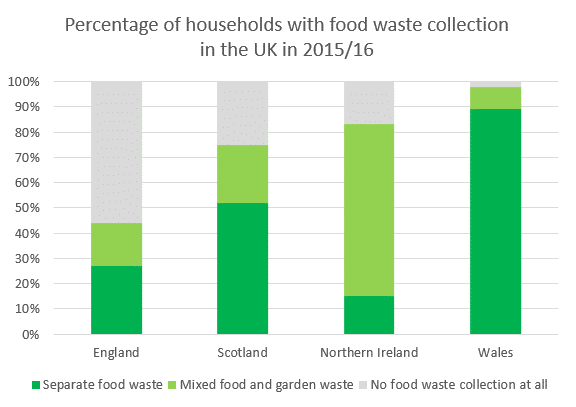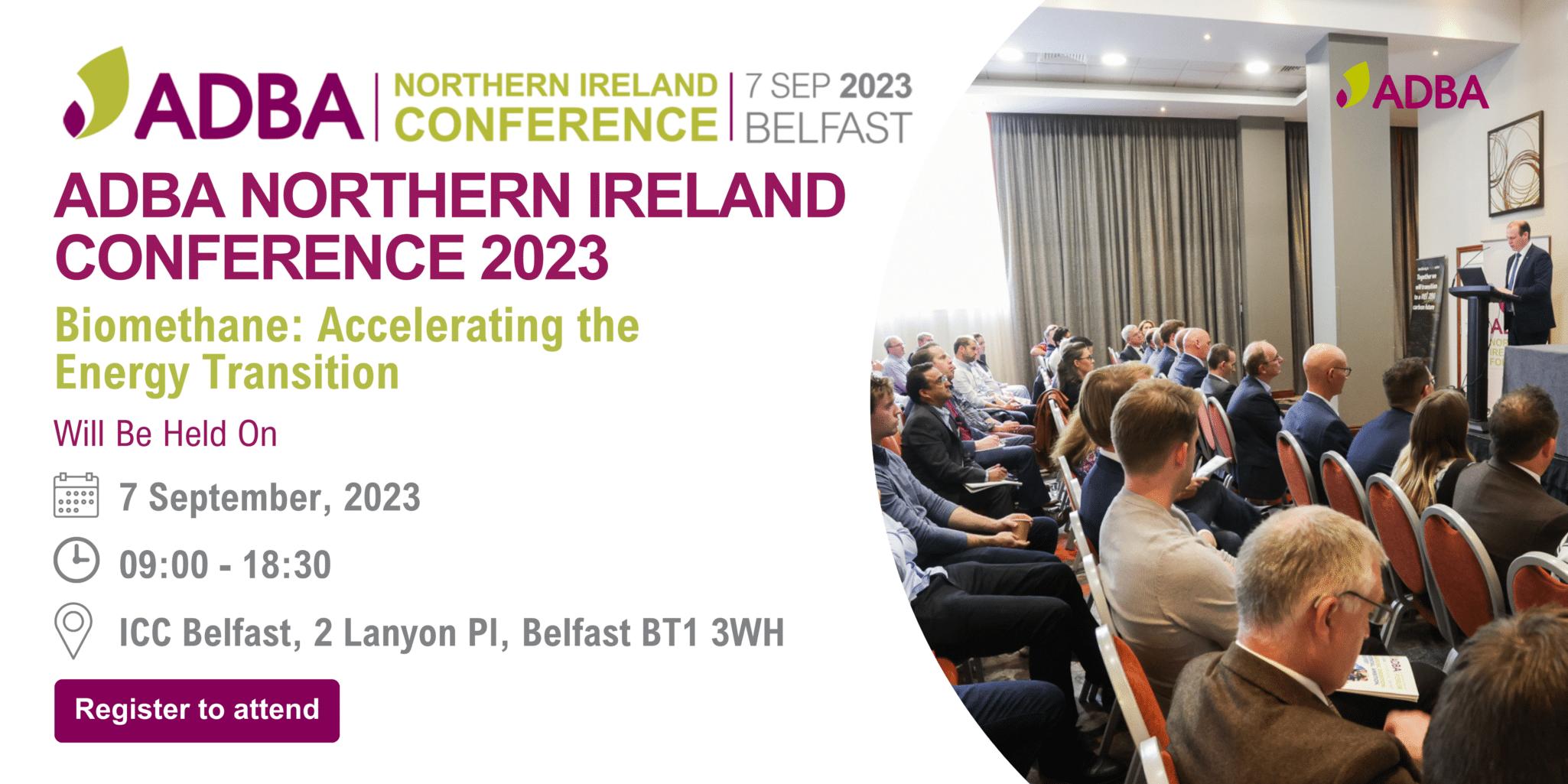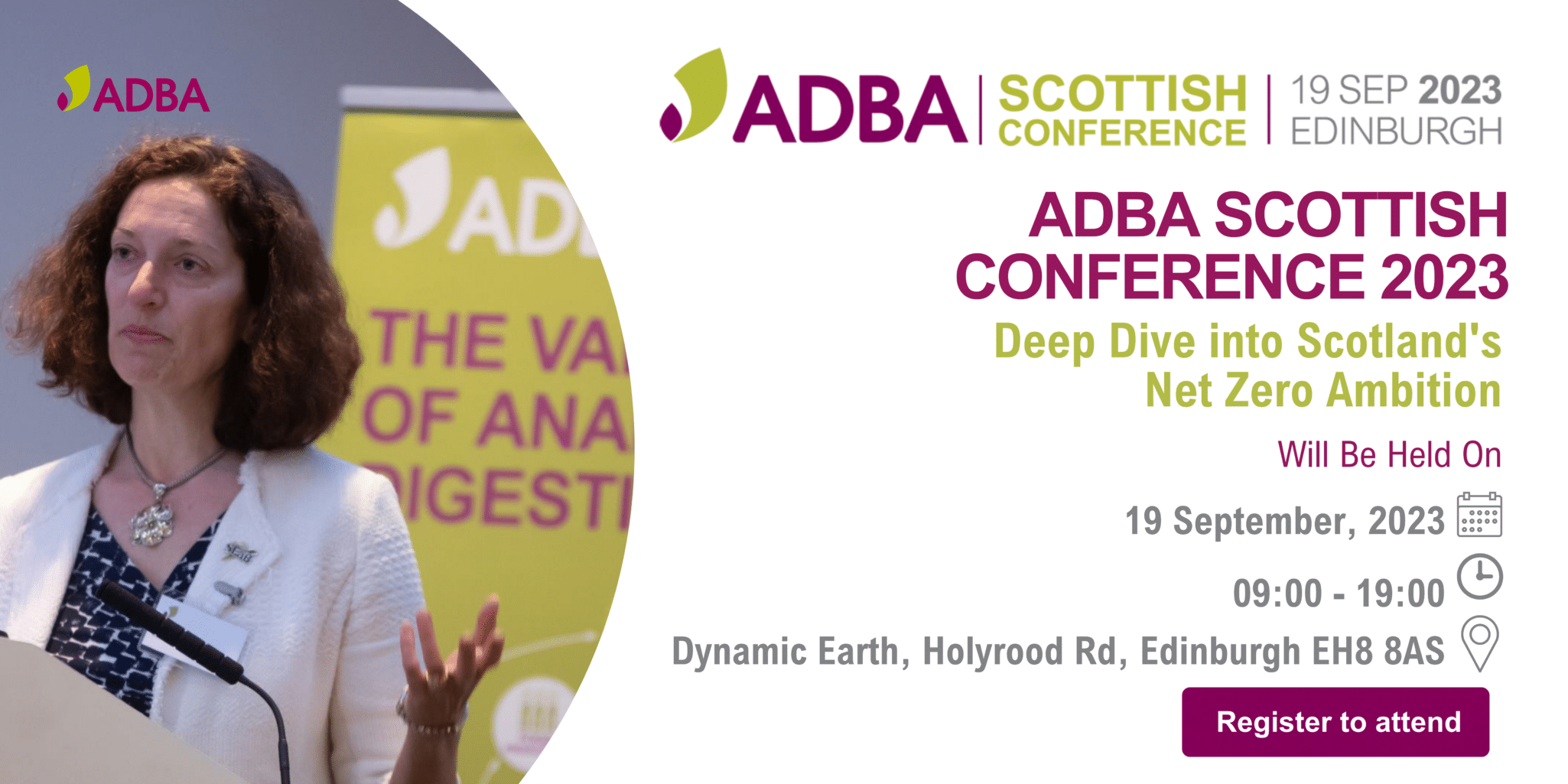On 15 March 2024, ADBA submitted its formal response to the Scottish Government's consultation on…
How are we doing on separate food waste collections?
The Waste & Resources Action Programme (WRAP) has provided the latest data on separate food waste collections among local authorities (LAs) in England.

In 2016/17, there were 109 LAs with separate food waste collections in place, representing 1/3 of all LAs in England. With the figure increasing ever year, this does represent some degree of progress. However, a 7% increase in 4 years is not good enough. In order to achieve our carbon goals, and improve the amount and quality of food waste feedstock going to anaerobic digestion, we need a much higher rate of uptake.
Scotland and Wales, on the other hand, are doing much better. 56% of local authorities have separate food waste collection in Scotland, with the figure in Wales even higher at 86%.
If we look at the WRAP statistics on the number of households with some form of food waste collection, the story is very similar. Only 27% of English households have separate food waste collections (44% if include food mixed in with garden waste). In Scotland, the corresponding figures are 52% (75%), in Wales they are 89% (98%) and in Northern Ireland they are 15% (83%):

What this means is that only 675k out of 4.7mn tonnes of food waste produced by households in the UK per year is collected for recycling, according to WRAP. This is just 14% of the total. The rest (4mn tonnes) is collected in the residual waste stream, and therefore not sent to anaerobic digestion (AD).
Posatively, DEFRA this week released a report showing a 15% increase in the quantity of food waste collected in England last year.
WRAP is doing some work on greater consistency in household recycling. This means making it easier for households to recycle more; making it more cost effective for councils and others to provide services; and improving the quantity and quality of materials available to industry. More can be read on the Consistency Framework here.
As part of this work, WRAP ran 7 pilot trials in 2016 which assessed the business case for separate food waste collections across 49 local authorities (when introducing one of the 3 systems from the Consistency Framework which all include separate food waste collections). 80% of these reported a positive business case (cost saving). So why aren’t more LAs implementing separate food waste collections?
Food Waste Recycling Action Plan (FWRAP)
The Food Waste Recycling Action Plan (FWRAP) is another cross-industry initiative set up to help increase both the supply and quality of household and commercial food waste available for recycling. More on this can be read in my July blog here, including a link to WRAP’s new Cost Benefit Analysis (CBA) tool.
Cost Benefit Analysis (CBA) tool
The CBA tool was designed to help AD operators and local authorities that collect household food waste on a weekly basis weigh up the costs and associated benefits of implementing proven intervention measures such as using bin stickers and caddy liners, based on the specifics of their local arrangements.
ADBA National Conference 2017
Food waste will be a central theme in the upcoming ADBA National Conference 2017 on Thursday 7th December.
At 12.40, there will be a Keynote speech from Professor Ian Lamont Boyd FSB FRSE, Chief Scientific Adviser for the Department for Environment, Food and Rural Affairs (DEFRA), who will give a government perspective on food waste recycling.
Then at 16.00, there will be a session titled “What are the most effective food waste collection systems, and what can we learn from them?”, where we’ll be hearing from representatives from local authorities from all four nations of the UK that have successfully implemented food waste collection systems.
The full programme can be found here.
Don't miss out, book a ticket here!




